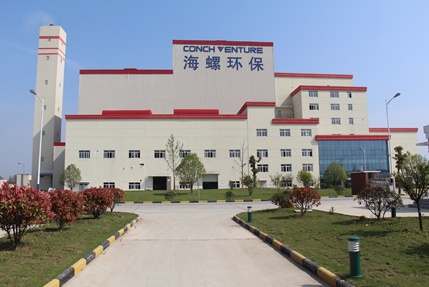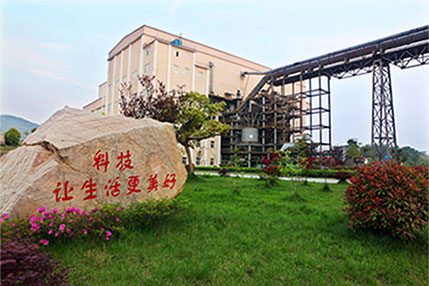





China Conch Venture Holdings Co., Ltd. is the third listed company in the Conch family (HK00586), which is mainly engaged in the energy-saving and environmentally-friendly new material industry.The company has advanced solid waste and hazardous waste treatment and garbage treatment and other environmental protection technologies. Environmental protection equipment is independently manufactured and can provide integrated services of project investment, design, construction, and operation management.
The company currently has three types of technologies: the use of cement kilns to co-process industrial solid waste and hazardous waste, grate furnace household waste to generate electricity, and the use of cement kilns to co-process municipal solid waste.These three types of technologies can fully degrade dioxins, solidify heavy metals, digest sewage simultaneously, and have no odor diffusion, which truly realizes the reduction, resource utilization, and harmlessness of the treatment, and completely solves the secondary pollution.







Advanced technology, high degree of automation
Using cement kiln co-processing technology and advanced cement production technology to organically combine, waste disposal does not need to be sorted, processing a variety of solid waste.In addition, the stable high-temperature environment of the cement kiln is used to completely degrade the dioxin produced by incineration, and the harmful substances are decomposed and absorbed and solidified to realize harmless treatment.The grate furnace technology adopts segmented combustion, the combustion is fully and thoroughly, and the high-temperature flue gas generated by the incineration drives the steam turbine to generate electricity through the waste heat boiler, which truly realizes the recycling of waste treatment.Each production link is centrally controlled by the central control system (central control room), with stable system operation and high degree of automation.

Fully degrade dioxin
Cement kiln co-processing solid waste, hazardous waste and municipal solid waste: the unique high-temperature and alkaline environment of cement kilns is used to effectively treat the dioxin produced during incineration, and the emission index is better than that of developed countries in the European Union.
Grate furnace waste incineration power generation: using advanced incineration technology and advanced flue gas purification technology, so that dioxin emissions meet national and EU standards.

Curing heavy metals
When the cement kiln is used for co-processing, the slag and fly ash produced after incineration can be used as cement raw materials to achieve harmless treatment.The heavy metals in the waste are calcined at a high temperature to form mixed crystals with cement clinker to solidify; the slag of the grate furnace waste incineration can be used as a production building material, and the fly ash can be treated in a cement kiln.

Zero discharge of sewage
When the cement kiln is used to co-process industrial solid waste and hazardous waste and municipal solid waste, the sewage is filtered and sprayed into the gasifier for high-temperature oxidation treatment to completely decompose organic components and achieve zero discharge;Grate furnace waste incineration for power generation, waste leachate is used as cooling water after treatment, and the concentrated liquid is burned in the furnace, and the factory water system is truly recycled.

No special requirements for plant site selection
Cement kilns are used to co-process domestic waste: about 50 kilometers away from the urban area, a cement plant with a scale of more than 2000t/d, covering an area of 10-15 acres, generally does not require new land acquisition.
Co-processing industrial solid waste and hazardous waste using cement kilns: The general industry is developed, with an annual processing capacity of more than 60,000 tons, covering a transportation distance of 200 kilometers, covering an area of 10-15 acres, and generally does not require new land acquisition.
Grate furnace domestic waste incineration for power generation: near water sources and substations, generally located in the downwind direction of residential areas, there are no special requirements for site selection.

No odor diffusion
The factory building and storage warehouse/garbage pit adopt a fully sealed structure, and the odor generated in the warehouse is pumped into the gasifier/grate furnace for incineration, so that the factory building and storage warehouse are in a negative pressure state, and the spread of odors is avoided.The project workshop is often visited by students from the local school, which has become an education base for environmental remediation.
So far, 158 environmental protection projects have been successfully promoted in 23 provinces, municipalities and autonomous regions, Vietnam and Sri Lanka.Among them: 79 solid and hazardous waste treatment projects, 61 grate furnace waste-to-energy projects, 16 projects using cement kilns to co-process domestic waste, 2 other waste disposal projects(Low temperature pyrolysis + food waste), 2 black and odorous water treatment projects.After the planned project is completed, it will form an annual disposal scale of 13.01 million tons of domestic waste and 8.95million tons of solid and hazardous waste.